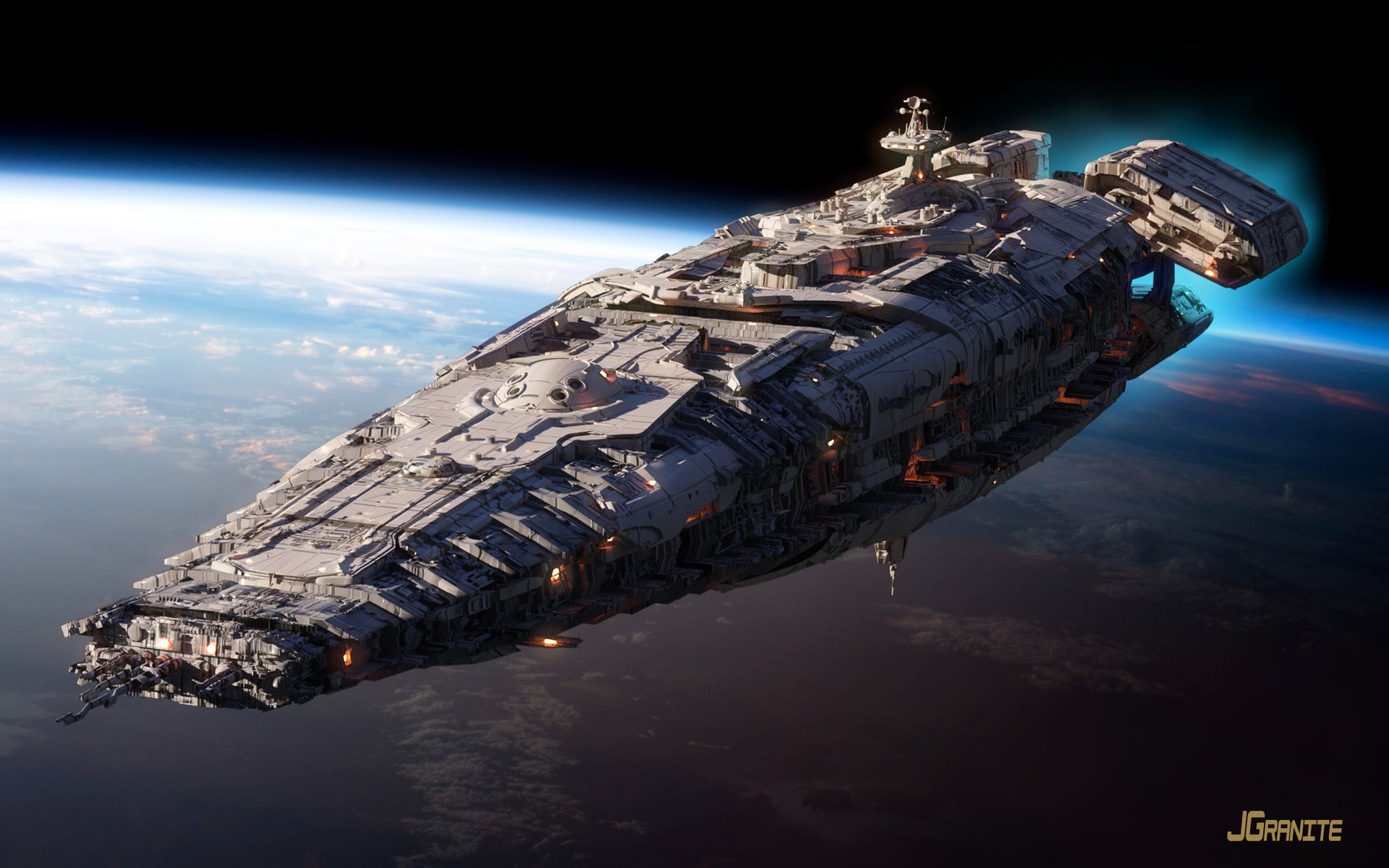Gilamar Skirata
The most important step is always the next one


- Intent: To refit the Ash'amur-Class Mandalorian Dreadnought to 5.0 standards
- Image Source: "Battlecruiser Concept" by, James Grant
- Canon Link: MC90
- Restricted Missions: None
- Primary Source: Ash'amur-Class
- Manufacturer: MandalMotors
- Model: Ash'amur II-Class Dreadnought
- Affiliation: Various Mandalorian Factions, Closed-Market (Private Militaries/Other Factions by Contract)
- Production: Mass-Produced.
- Material: Durasteel
- Mandalorian Steel
- Classification: Destroyer, Command Ship
- Length: 1900 Meters
- Width: 316 Meters
- Height: 475 Meters
- Armament: ModerateTurbo Laser Batteries
- Mass Driver Batteries
- Ion Cannon Batteries
- Ordinance Launcers
- Tractor Beams
- Mandalorian Steel Armor
- Deflector Shields
- Point Defense Weapons
- Point Defense Missiles
- Dampner Aerosol Missiles
[*]Maneuverability Rating: Low
[*]Speed Rating: Average
[*]Hyperdrive Class: Average: 2
STANDARD FEATURES
- Deflector Shields
- Life Support Systems
- Escape Pods
- Hangar
- Encrypted Communications Network
- Holonet Tranciever
- IFF Transponder
- Various Starship Safety Systems
- Advanced Battle Analysis Computer
- Advanced Sensor Suite
- Long Range Communication System
- Compartmentalized Power and Life Support Systems
- Bes'uliik Hangar
- Drop Pod Bay
- Armor Plating: Ballistic attacks such as ship to ship missiles or mass drivers are less effective.
- Compartmentalized Design: The ship will be able to fulfill its purpose as a command ship unless the bridge is destroyed.
- Strong Sensor Suite: The sensor towers of the Ash'amur provide invaluable information to a fleet commander.
- Sensor Tower: Destroying both sensor towers above and below the bridge will cut all audio, visual, and information feeds from entering the bridge, crippling the ship while the crew scrambles to get back-up feeds online, which even activated are inferior to the amount of information the sensor towers provided.
- Weak Shields: Shifted focus from shields to more beefy armor has reduced shield strength.
Again based on a combination of Mandalorian and Mon Cal design language, it abandoned the typical wedge shape common in factions deriving themselves from the Republic or Empire. While the wedge design did have its advantages, they often almost exclusively favored front facing weapons, leaving their bridges and engines in the rear undefended. By contrast, the Ash'amur borrows from Mon Cal designs and spreads out its weapons throughout the entire ship, eliminating blind spots, a slight shift in design philosophy from the Ash'amur I-Class which relied heavily on short range, high powered front facing and broadside turbolasers. Scattered between these turbolasers were point defense systems that featured a mixture of mass driver and laser-based systems. Because Mandalorian ship-based shielding technology was rather standard, with some, including some of the designers of the Ash'amur II, even going as far as to call it inferior to the rest of the Galaxy's, the Ash'amur instead relies heavily on heavy Mandalorian Steel armor plating along side its shields. Foregoing the redundant shields of Mon Cal ships, the Mandalorian hull design was by and large superior to other ships in their class, providing much better armored protection from ballistic threats such as missiles and mass drivers, while also providing better heat and energy dispersion than durasteel and other common ship materials while also being lighter than alusteel.
A shift in Mandalorian ship design, championed by both MandalTech and Mandal Hypernautics, the Ash'amur II also shifted from a fully exposed bridge, to instead having a partially integrated bridge. Low to the hull of the ship, most of the command bridge is within the Ash'amur itself, with only the top, mostly armored viewports, being exposed. The command bridge relied heavily on sensors spread throughout the ship as well as the two command sensor towers extending from the top of the bridge and down from its underbelly. These units served as powerful signal boosters and data collection points and were essentially large computer rooms that were constantly crunching data, sending live fleet reports, and other crucial data to the bridge. The ship was also largely compartmentalized. Split into four sections including the bridge and the hangar as their own sections, each part could function independently of another, meaning that the ship could continue to fulfill its purpose as a command ship as long as the bridge was still active.
Despite these slight changes in defensive and offensive capabilities and appearing to be ready for an all out brawl, the Ash'amur still required supporting ships to do its job well. While one by itself was generally enough to keep small invading forces away, full on invasions or assaults would require other ships as its role had shifted from that of an equal brawler to a true command ship. It also gave up some of its hangar space to provide for a more powerful reactor which powers its greater weapons coverage.







